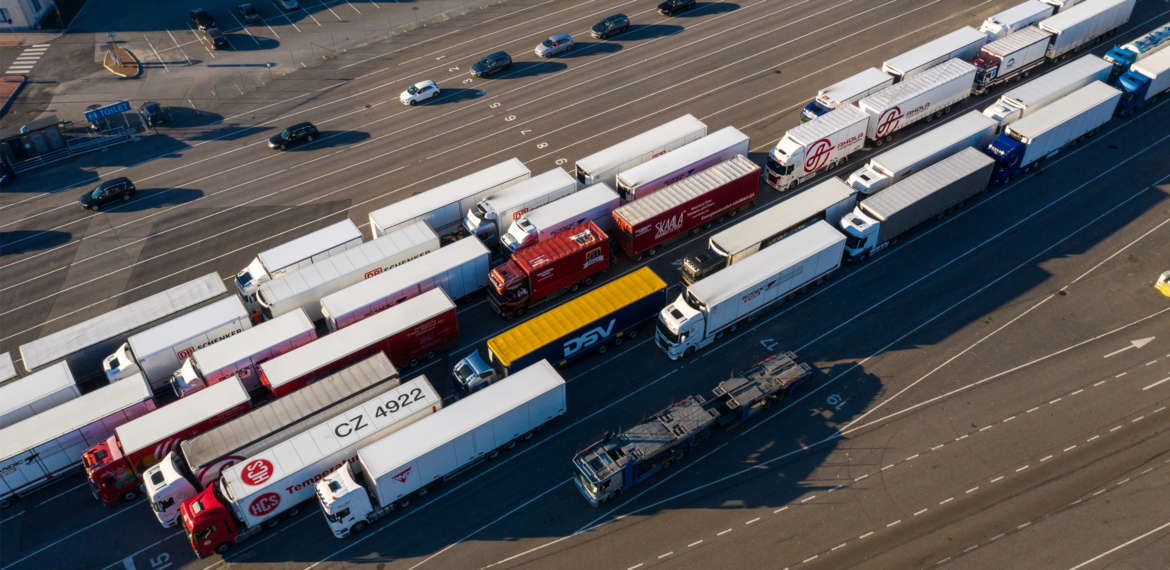Cargo transports increased in exceptional conditions
The cargo transports in the Port of Turku comprise of unit cargo, transports of processed goods, and demanding project shipments of industry. Regular frequent liner services to Scandinavia and other key ports on the Baltic Sea as well as connections to ocean lines add flexibility to the shipment schedules of companies, enhance the cost-efficiency of logistics and strengthen supply reliability.

The cargo transports in the Port of Turku grew in 2020 partly due to exceptional conditions, but the cargo volumes already increased from the beginning of the year on. Growth accumulated especially from Scandinavian traffic, as both Viking Line and Tallink Silja focused all their services between Finland and Sweden to run through the Port of Turku.
On the whole, a total of 2.4 million tonnes of cargo passed through the Port of Turku, up by 12.2 per cent on the previous year. In unit cargo the growth was nearly 18 per cent. Exports accounted for 1.2 million tonnes of the transports and imports for 1.2 million tonnes. The filling rates of vessels in Scandinavian traffic were at a high level throughout the year, and the capacity released from passenger cars was efficiently used.

Positive development also took place in other liner traffic of the Port of Turku. Opened at the beginning of 2020, the connection from the Port of Turku to Rotterdam turned out to be an attractive export and import route. The connection complements the existing route of Mann Lines, offering excellent further connections to ocean lines and comprehensive rail and road connections to all over Europe. At the time of Brexit the shipping company’s connection to Great Britain also turned out to be more significant than before by providing reliable solutions and expertise to companies faced with a new situation.
To enhance the cargo transport services the Port of Turku has implemented and is currently implementing a number of major upgrades, such as the new outdoor field area arrangements including new technologies in the inner harbour. New weighing, measurement and photography systems of vehicles were introduced in Viking Line’s outdoor field area, and reforms in Tallink Silja’s outdoor field area are also ready to be taken into use. During the past year the field area was levelled, and the traffic guidance was developed by concentrating passenger traffic and cargo transports to the same field area and by installing digital traffic signs in the area. The reforms of the outdoor field areas of both shipping companies make the flow of cars considerably smoother and speed up the loading of the vessels.

The development goals concerning the services for goods transports are also supported by the sale of the Port’s crane business to Turku Stevedoring Oy for which a letter of intent was signed. The transfer of the crane services to the port operator has been in preparation for a long time, because the actual operative work is not part of the Port’s core tasks. The decision allows for new investments in the Port’s core business and at the same time secures reliable and professional crane services to all operators and shipping companies.
The Port of Turku has space and service capacity for considerably larger cargo volumes than it currently handles. The existing infrastructure with logistics services enables the opening of new ship routes even at a short notice, using also rail transports. A special development item for new combined transports is the part of the Pansio Harbour with an existing rail connection to the national rail system and infrastructure suited to the operations. Negotiations have proceeded furthest on opening a new route to Poland, for which a letter of intent was signed with the Port of Gdynia in late 2019. Due to the coronavirus pandemic the progress of the matter has slowed down, but the goal is still to generate new cargo transports and passenger traffic between the ports and improve the competitiveness of the parties in the international transport network.
Read the full annual report 2020 (pdf).
Text: Kari Ahonen
Photo: Jarmo Piironen
